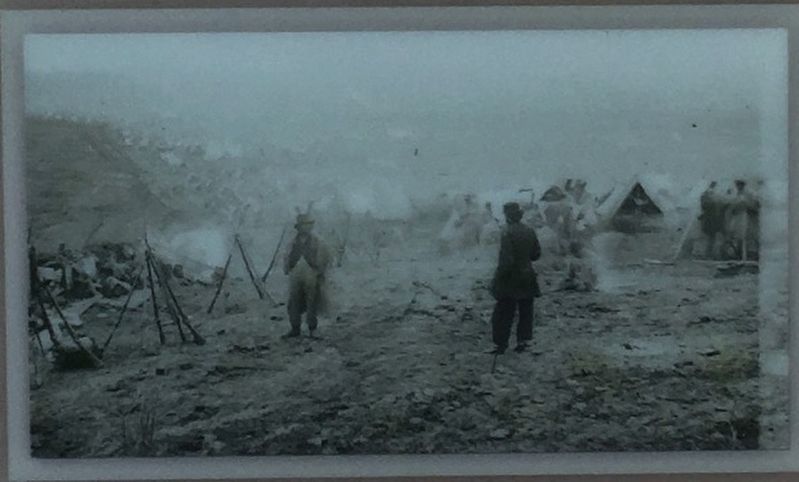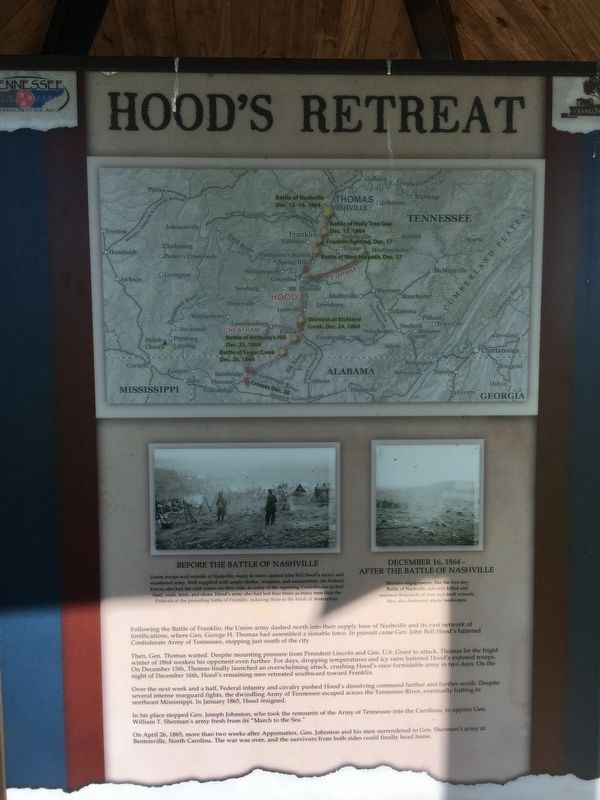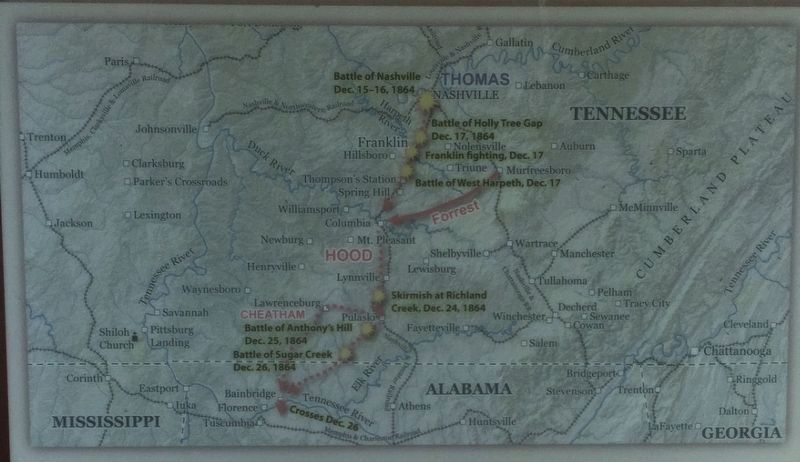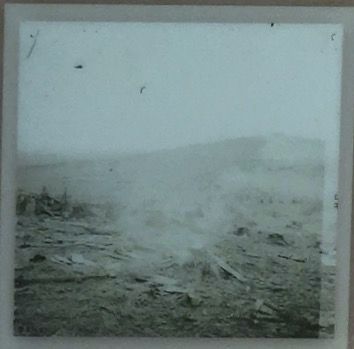Franklin in Williamson County, Tennessee — The American South (East South Central)
Hood's Retreat
Then, Gen. Thomas waited. Despite mounting pressure from President Lincoln and Gen. U.S. Grant to attack, Thomas let the frigid winter of 1864 weaken his opponent even further. For days, dropping temperatures and icy rains battered Hood’s exposed troops. On December 15th, Thomas finally launched an overwhelming attack, crushing Hood’s once formidable army in two days. On the night of December 16th, Hood’s remaining men retreated southward toward Franklin.
Over the next week and a half, Federal infantry and cavalry pushed Hood’s dissolving command further and further south. Despite several intense rearguard fights, the dwindling Army of Tennessee escaped across the Tennessee River, eventually halting in northeast Mississippi. In January 1865, Hood resigned.
In his place stepped Gen. Joseph Johnston, who took the remnants of the Army of the Tennessee into the Carolinas to oppose Gen. William T. Sherman’s army fresh from its “March to the Sea.”
On April 26, 1865, more than two weeks after Appomattox, Gen. Johnston and his men surrendered to Gen. Sherman’s army at Bentonville, North Carolina. The war was over, and the survivors from both sides could finally head home.
Erected by Franklin's Charge.
Topics and series. This historical marker is listed in this topic list: War, US Civil. In addition, it is included in the Former U.S. Presidents: #16 Abraham Lincoln, and the Former U.S. Presidents: #18 Ulysses S. Grant series lists. A significant historical date for this entry is December 16, 1864.
Location. 35° 54.297′ N, 86° 51.519′ W. Marker is in Franklin, Tennessee, in Williamson County. Marker can be reached from Eastern Flank Circle, 0.4 miles south of Lewisburg Pike (Business U.S. 431), on the right when traveling west. Located in Eastern Flank Battlefield Park. Touch for map. Marker is at or near this postal address: 1345 Eastern Flank Cir, Franklin TN 37064, United States of America. Touch for directions.
Other nearby markers. At least 8 other markers are within walking distance of this marker. The Final Campaign 1864 (here, next to this marker); The Battle of Franklin (here, next to this marker); Standing at the Crossroads 1861 (here, next to this marker); Becoming the Front Line 1862 (here, next to this marker); A Crucial War Zone 1863 (here, next to this marker); Battle of Franklin, Eastern Flank (a few steps from this marker); a different marker also named Battle of Franklin, Eastern Flank (within shouting distance of this marker); a different marker also named Battle of Franklin, Eastern Flank (within shouting distance of this marker). Touch for a list and map of all markers in Franklin.
Also see . . . The Battle of Franklin. (Submitted on May 11, 2017, by Brandon Stahl of Fairfax, Virginia.)

Photographed By Brandon Stahl
4. Before the Battle of Nashville
Union troops wait outside of Nashville, ready to move against John Bell Hood's weary and weathered army. Well supplied with ample shelter, weapons, and ammunition, the Federal Forces also had the cold winter on their side, as many of the opposing Confederates lacked food, coats, tents, and shoes. Hood's army also had lost four times as many men than the Federals at the preceding Battle of Franklin, reducing them to the brink of destruction.
Credits. This page was last revised on August 27, 2020. It was originally submitted on May 11, 2017, by Brandon Stahl of Fairfax, Virginia. This page has been viewed 472 times since then and 26 times this year. Last updated on May 17, 2017, by Brandon Stahl of Fairfax, Virginia. Photos: 1, 2, 3, 4, 5. submitted on May 11, 2017, by Brandon Stahl of Fairfax, Virginia. • Bill Pfingsten was the editor who published this page.



